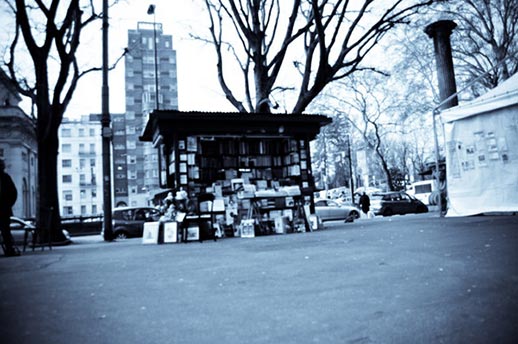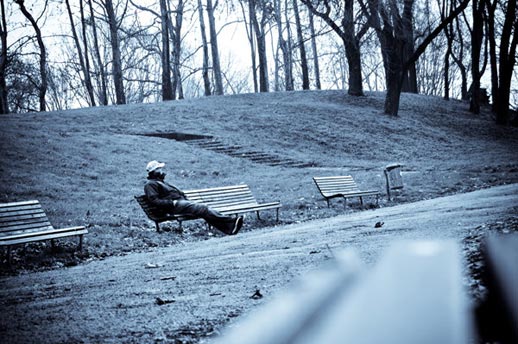 |
| Location shot for 400 Grams. |
Anyway, after many years of pondering the problems of funding, shooting and distributing movies, I believe I have an answer. However, it means completely changing the way we think about movies. It is a production philosophy designed to let creative people make brilliant movies quickly, cheaply and without exploiting the people who contribute to its making.
Here are the headlines:
OK. In practical terms this means you are shooting in public places, but never in such a way that anyone is aware you are shooting. That's why it is done best with a standard DSLR camera. (I really want to see someone figure out how to do this with the RED by the way!)
- One DSLR camera, One person, One microphone (The lone gun shoots alone)
- Strip movie making down to the basics - a camera, a great story and some actors
- A lone gun never asks for permission to shoot at a location
- Put something original and honest in front of the camera
- Think like a photographer, not like a film-maker
- Money is for food, transport and a dedicated hard-drive for each project and nothing else
- Natural light only
- Everyone who works on a movie, has the right to distribute that movie for free or for profit
- No credits before the title ever, regardless of how famous someone is.
- The end product must be cinema quality (capable of projection to cinema sizes without falling apart)
- A creative common license for the movie (how open you go is up to you, but people must be able to share and alter it for free)
- If you’re going to be a gorilla… you may as well wear the full monkey suit.
In terms of the sound recording there are two alternatives: radio mics for all cast - or the way I am doing it, a $30 pair of binaural mics, (which look like iphone headphones) jacked into a portable digital recorder. (I've tested this method and the sound quality is phenomenal, once you've got the hang of it) To use the binaural system, the actors have to set away the sound, which is placed in shot between them... and one of them is given a Zippo cigarette-lighter to clack at the start of a scene, which gives you the cue for syncing the audio.
 | |||||
| Location shot for 400 Grams.
In reality this means you are only filming master shots. You can't control the environment to get coverage. However, this really, really speeds up the production process. Basically, you and the actors pick your location. You decide where you are going to place the camera. When you're set up, they walk into the set up, set away the audio and play out the scene. Because there is no crew and no lines to edit, the acting can be completely natural (think Woody Allen circa Manhattan).
Here's the list of kit I think I use (feel free to improvise better solutions):
One of the things that I think makes this philosophy work is that the writer/director decides in advance, to give everyone who contributes to the movie the rights to distribute the movie for free or for profit. My project has been running for four weeks so far - we’re in writing and pre-production – the first actor I attached has already told me he has friends at a European TV station, to whom he would like to give the finished movie... along with a raft of international arts festivals. Neither of those two distribution options would ever have occurred to me. I'm working on free distrinution via iTunes and also on getting a US thearical release via some of my US contacts. Once you take the rights shackles off a project, it's amazing what happens. Seriously amazing.
|


No comments:
Post a Comment